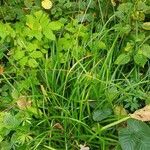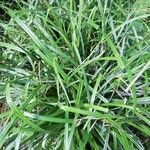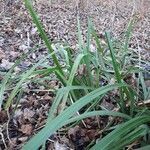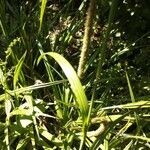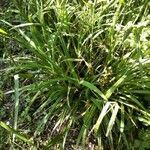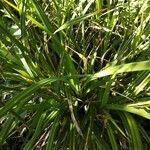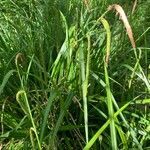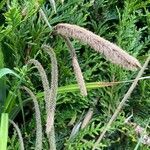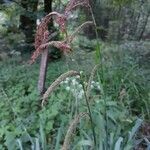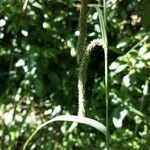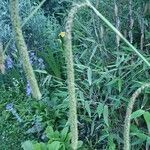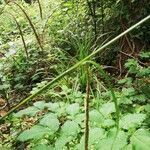Culms trigonous in cross section, smooth distally. Leaves: ligules much longer than wide; blades 8–18 mm wide, glaucous, glabrous. Inflorescences 20–100 cm; proximal bract 15–60 cm; lateral spikes pendent, long-cylindric, (30–)60–160 × 5–8 mm; terminal spike arching. Pistillate scales narrowly ovate to narrowly obovate, 3.3–4.2 × 1–1.6 mm, ± equaling to slightly exceeding perigynia, glabrous. Perigynia yellowish green to brownish green, dotted brown, somewhat inflated, narrowly ellipsoid, 2.6–4 × 1.1–1.5 mm, herbaceous; beak smooth. Achenes brown, smooth.
